A few decades ago, computer data was stored externally in floppy drives (diskettes). For those who never saw one, it was a small plastic storage device, and the more recent ones were just a little larger and thicker than a credit card. They were the standard back then for storing drivers and media.
Then came the Compact Disk. This was initially developed for sound/music storage but later adapted to store software and drivers.
Since their invention, optical disks have been the ideal data storage method. Computers and parts manufacturers shipped their products with CDs having all the essential drivers and utilities stored for various components, including the motherboard.
However, as expected, the flow of time could have been more kind to CD drives. With the high-speed internet and widespread availability, CD drives have also become obsolete on PCs, particularly laptops.
So this brings us to the question: how to install motherboard drivers without CD Drive?
You will need an internet connection to install the drivers for a motherboard without a CD Drive. You can access some methods to download drivers with an active internet connection via WiFi or Wired LAN.
TABLE OF CONTENTS
The CD Drive IS Almost Obsolete
CD drives, aka optical drives, have almost gone entirely obsolete. Just as the Floppy Drive once became a part of the digital museum, so is the PC optical drive on its way.
The high-speed internet has enabled access to software and drivers online without relying on something physical.
Therefore, it makes sense why someone would want to learn how to install motherboard drivers without CD Drive.
Fortunately, many utilities within the operating systems have made downloading and updating the motherboard and system drivers reasonably easy.
How to Install Motherboard Drivers without CD Drive
There are a few ways to install the drivers if your PC needs a CD drive.
Installing from Within the OS Needs an Internet Connection
If you have an internet connection and your computer manages boot-up, install/update the drives from within the OS.
1. Using Windows Updater
For Windows users, this utility lets you do more than update your OS. You can get new driver updates and learn when the last update was performed.
For this, Navigate to the “Windows Update” utility.
- On Windows 10, go to “Start.”
- Go to “Settings.”
- Click on “Updates and Security.”
- Then go to the “Windows Update” tab.
- Click the “Check for Updates” button from there.
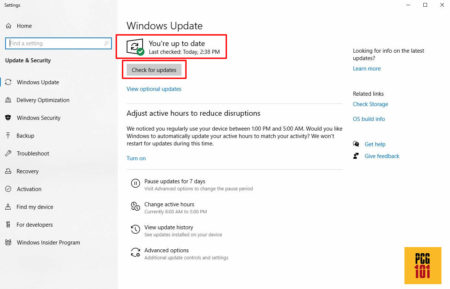
If drivers are available for your system, you will find them here. You can then go ahead and install them. The utility should download and install the drivers automatically for you.
Again, for this to work, you must have an internet connection.
You can access this utility by pressing the Start button and typing “Windows Update” on the Windows Search Bar.
2. Download the Drivers from the Website
There are more straightforward methods than this, but it ensures excellent results when correctly done.
You must go to your motherboard’s manufacturer’s website using any browser. All major motherboard manufacturers offer their motherboards and online drivers, including ASUS, Gigabyte, MSI, ASRock, Biostar, etc.
Please search for the motherboard by typing its make and model on Google.
Access the relevant page and visit its “Support” section.
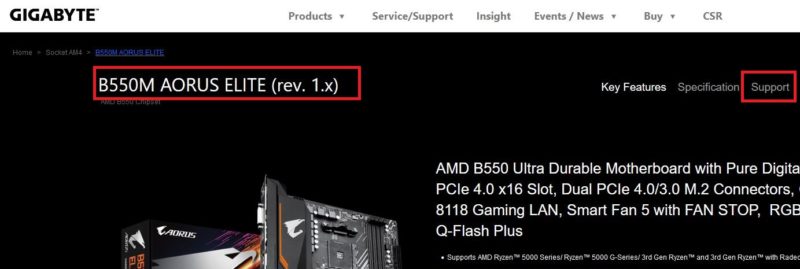
The driver that you are particularly looking for is the “Chipset” Driver. This driver directly relates to the motherboard itself.
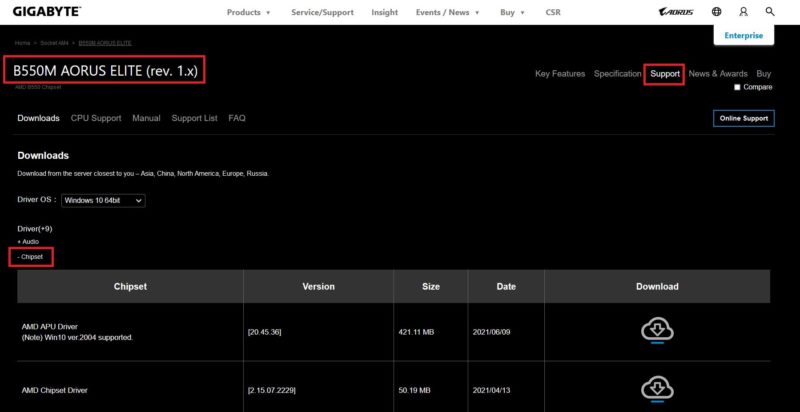
But often, you will find a list of drivers for other sub-component of the motherboard, including Audio, LAN, USB, SATA, etc.
Are you on the relevant motherboard page from the same manufacturer with identical names?
Once the file is downloaded to your computer, install the program. Make sure you install one driver at a time.
You may have to restart your PC after each driver completes its installation.
Drawbacks
This method is a process that takes time for all scenarios. If your computer currently doesn’t have any network drivers for Ethernet or WiFi, you will not be able to connect to the internet in the first place.
NEED TO Connect to THE Internet? – How To Install Motherboard Drivers Without a CD Drive and Internet Connection?
The abovementioned methods work, assuming you can connect to the internet.
A CD drive or internet connection would be best to avoid an uncanny predicament.
However, fret not; it is still possible to install motherboard drivers on your PC using the same principle mentioned in the methods above.
Copy the Drivers to an External Hard Disk or USB Flash Drive from a Secondary PC
If you have a flash drive or an external hard disk, you can use a second computer that is operating normally to download and copy all the drivers onto it.
You may have to call your friend or anyone to help you.
Hooking Up the Internal Hard Disk to a Second PC – In Case of NO USB PORTS
You can try this method when you do not have a CD Drive, Internet Connection, or working USB ports to put a flash drive in.
You will need some novice technical skills as you will have to open up your PC.
Also, you will need another working PC for this method to work.
- Unscrew and open up your primary computer (the one that requires driver installation) and take out its hard disk – make sure it is disconnected from the power supply
- Unscrew and open up your secondary computer that is working and can connect to the internet – again, make sure it is disconnected from the power supply
- Plug the hard disk of your primary computer into an extra SATA slot available on your secondary computer.
- Power up and boot up your secondary computer; once booted, you will see a separate partition for the newly installed hard disk.
- Download all the primary motherboard drivers on your secondary computer.
- Put all the downloaded drivers in a separate folder on the newly created partition.
- Shut down your secondary computer and unplug it from the power supply.
- Remove the primary computer’s hard disk and plug it into its motherboard.
- Boot up your primary computer, and locate and install the downloaded drivers.
When installing drivers, your computer may restart several times, but this should solve your problems.
Also Read: How to Reset Motherboard BIOS?
Should You Use THIRD-PARTY Driver Installer Programs?
Many third-party software out there scan your PC for any missing or outdated software and install them automatically – they do require an internet connection, though.
However, given that you already have a utility like Windows Updater, there is no use for such third-party software.
Plus, it is always recommended to download and install drivers from the official websites. With third-party software, it is hard to tell which sources the software fetches the drivers from.
Some recognized third-party driver installers, such as IObit Driver Booster, have been reviewed on PCmag and Cnet to be safe and credible. Still, since they tend to charge a license fee, it makes them a waste since the Windows Update Utility is free of cost and performs more or less the same function.
Also Read: Why Motherboard is Called Motherboard?
Finding Your Motherboard Drivers in THE Device Manager
Device Manager is an excellent utility that lets you identify if you have any drivers missing for any of the systems on the motherboard, i.e., LAN adapter, soundcard, USB ports, etc
In the Device Manager, the motherboard does not have a distinct section.
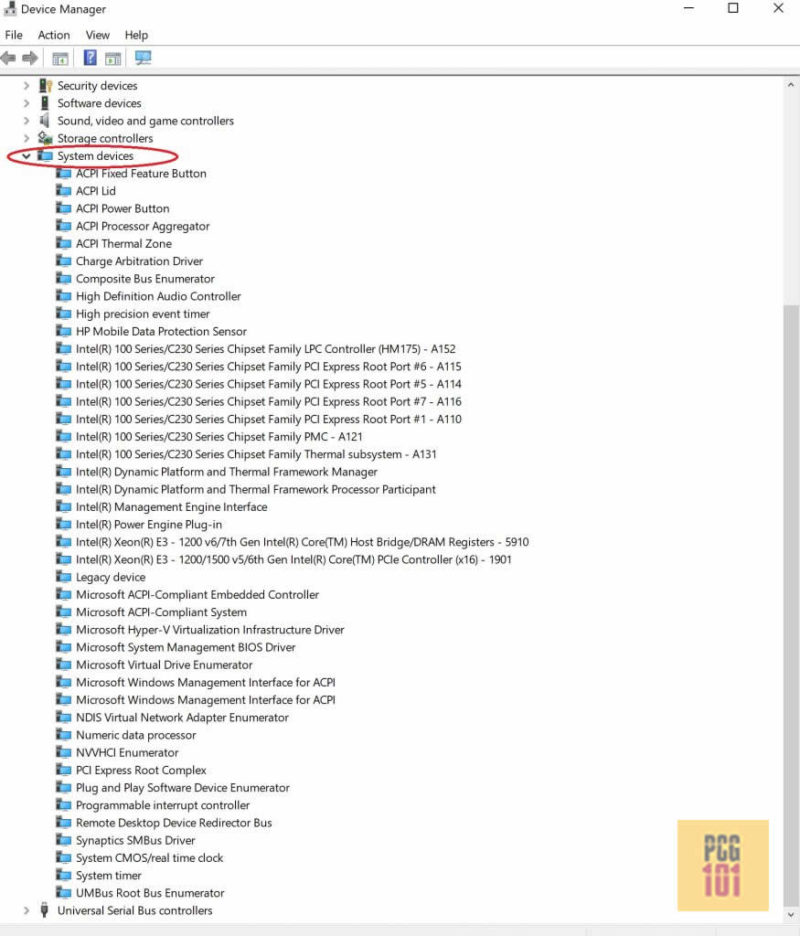
Instead, most systems found on it, such as ACPI, the methods, PCIe root complex, and their corresponding driver information, are found under the “System Devices.”
Device Manager can be accessed through the control panel by right-clicking “This PC” -> “Properties” ->. It would be best to figure out which drivers you must include.

If there are any issues with detecting a particular driver, i.e., say a driver for LAN card is missing, it will highlight it as cutting with a Yellow caution mark.
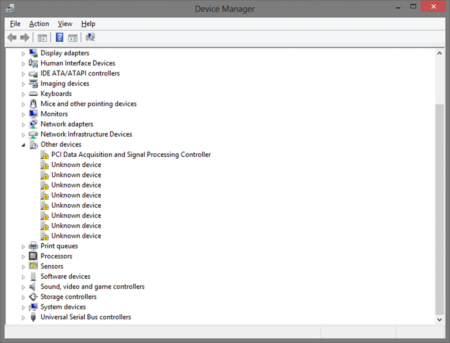
Also Read: Where is Motherboard in Device Manager?
Drivers Successfully Installed
If your drivers are successfully installed, you will see no “missing device” issues or caution signs on your Device Manager.
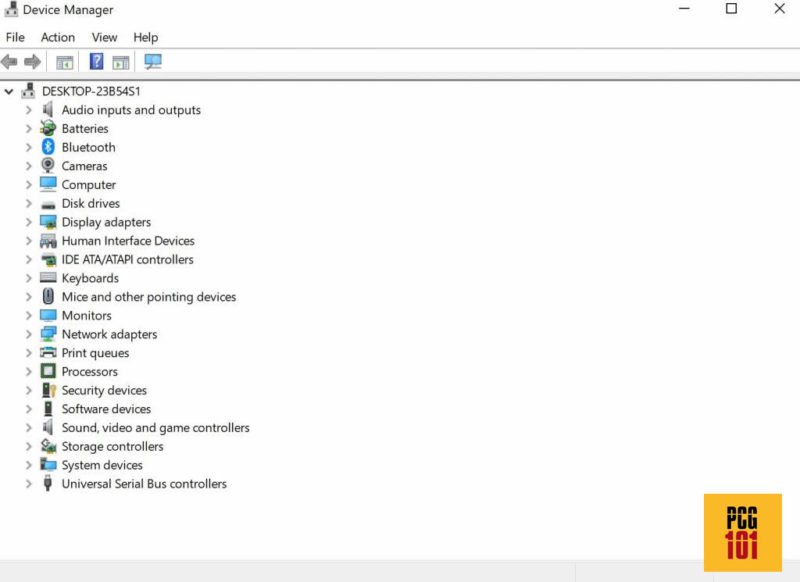
You can also double-click on any of the drivers to check the status of the driver. If all is good, the Driver Status will read” The Device is Working Properly.”
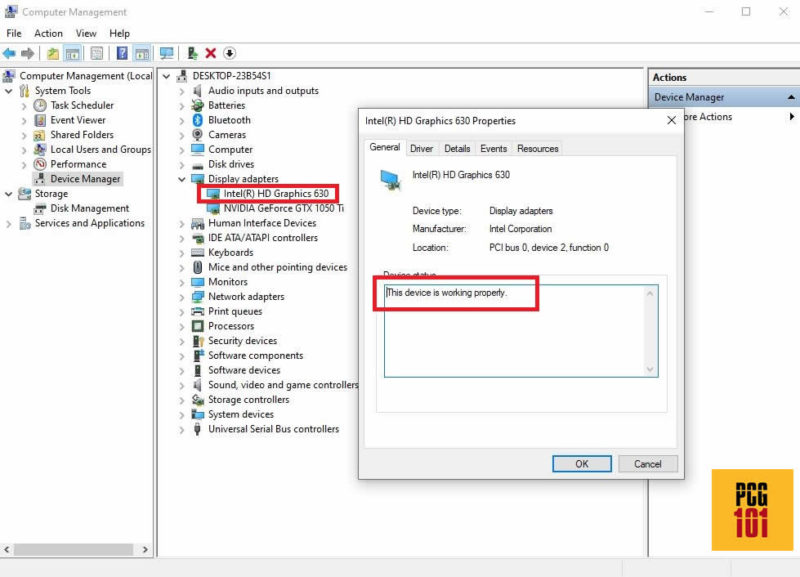
Also Read: How to Tell if Motherboard is Bad or Dead?
Conclusion
Here we talked about how to install motherboard drivers without CD drives. If you need to install motherboard drivers and don’t have a CD drive, don’t despair.
You still have some excellent options. If you cannot access the Internet, you need a second working PC to download all the required drivers.
FREQUENTLY ASKED QUESTIONS
1. Are there any risks or potential issues involved in installing motherboard drivers from a website or other online source?
Installing motherboard drivers from an unreliable or unverified website can be risky, as it may introduce malware or other security threats to your system.
It’s important to download drivers only from trusted sources, such as the manufacturer’s website or other reputable download sites.
It’s also important to ensure that you are downloading the correct drivers for your motherboard and operating system, as using incorrect drivers can cause system instability or other issues.
2. Can you use a USB drive to install motherboard drivers, and if so, what is the process for creating a bootable USB drive?
Yes, it is possible to use a USB drive to install motherboard drivers. To do this, you will need to create a bootable USB drive that contains the necessary drivers.
You can create a bootable USB drive using a tool such as Rufus, which can be downloaded for free from the internet.
Once you have created the bootable USB drive, you can insert it into your computer and boot from it to begin the driver installation process.
3. Are there any free tools or utilities that can help you to install and manage your motherboard drivers more easily?
Yes, there are several free tools and utilities that can help you to install and manage your motherboard drivers more easily.
One popular tool is Driver Easy, which can scan your system and identify outdated or missing drivers, and then download and install the correct drivers automatically.
Another useful tool is Driver Booster, which can update drivers with a single click and also provides backup and restore functionality.
4. What are some best practices for keeping your motherboard drivers up-to-date and ensuring optimal performance for your system?
To keep your motherboard drivers up-to-date and ensure optimal system performance, it’s important to regularly check for driver updates and install them as needed.
You can check for updates manually by visiting the manufacturer’s website or using a driver update tool, or you can enable automatic updates in your system settings.
It’s also a good idea to create a system restore point before updating drivers, in case any issues arise.
Additionally, you should keep your system clean and free from malware or other security threats, as these can affect system performance and stability.
